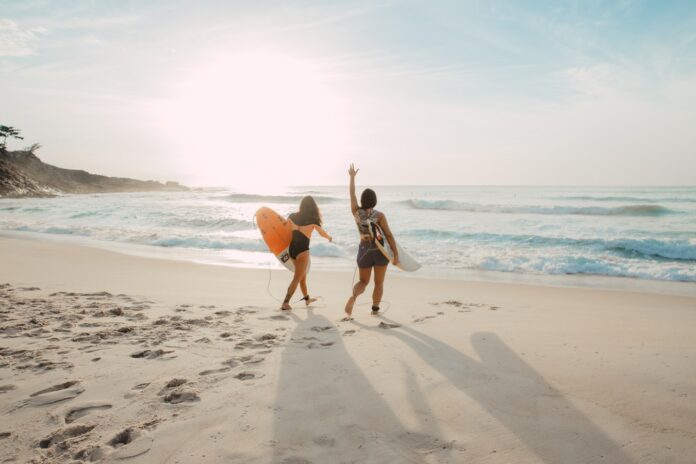
There are so many great things about spending a day at the beach. You can relax and chill out, top up your suntan, or search for marine life. However, beaches don’t just have to be about slowing down. They’re great for sport and exercise too! And with it much easier to do solo sports and social distance at the beach, it’s a great way to begin or maintain an exercise routine with the threat of Covid-19 still looming over us.
In this post, we’ll take a look at seven of the best exercises you can do at the beach. Then, it’s over to you to choose the one best suited to your lifestyle. Let’s check them out!
Stand up Paddle Boarding
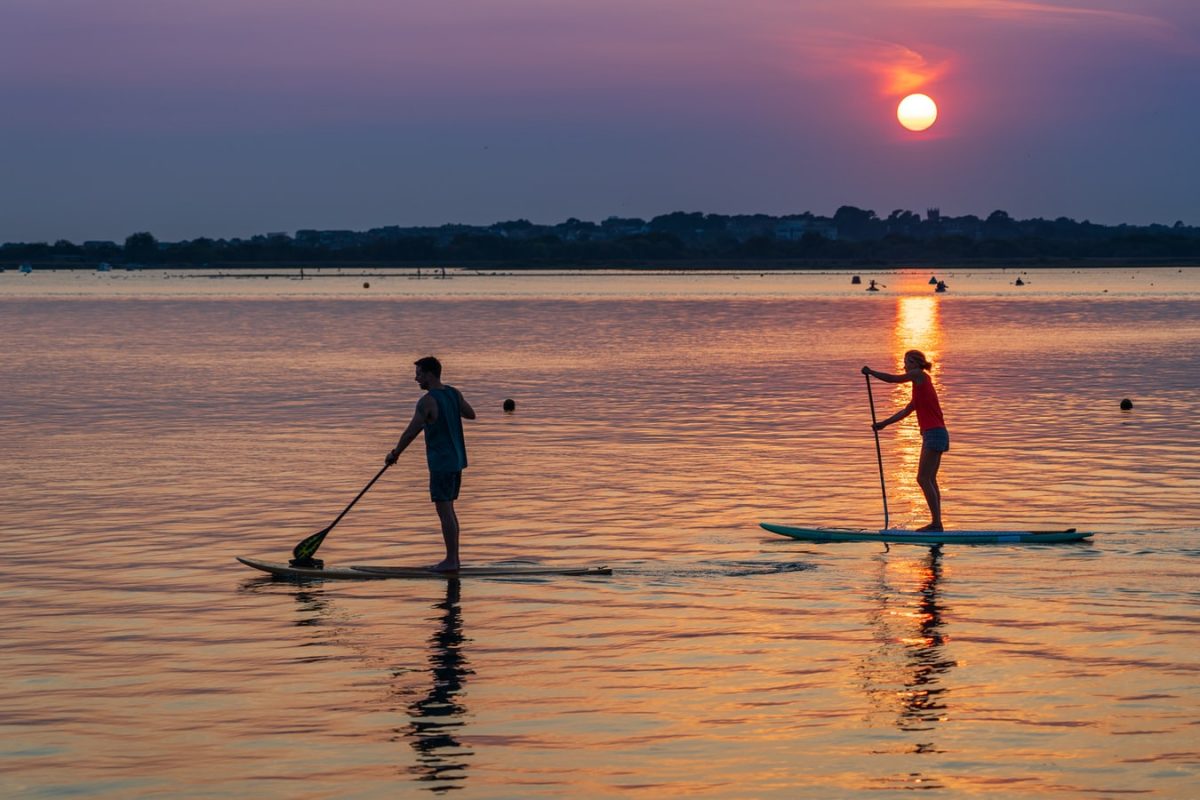
First up is a sport that’s gaining traction all over the world. Stand up paddleboarding is a low impact activity that will ease you back into working out after an arduous lockdown period. Despite being gentle and relaxing, it does give your entire body a workout though!
Legs and back muscles are engaged to increase levels of balance and stability, as is the core. This is one of the areas that benefit most from a SUP workout, and those who paddleboard regularly often develop abs of steel!
As an exercise, regularly stand up paddleboarding is likely to burn around 400 calories per hour, but that can be increased with surf SUP (700 – 1,000 per hour) and SUP touring (1,000+).
Dogs love the beach, did you also know that they love SUP? If you bring your dog, don’t forget to get him his or her own life jacket from GiliSports.
And while we’re on the subject of other ways to use your stand up paddleboard…
SUP Yoga
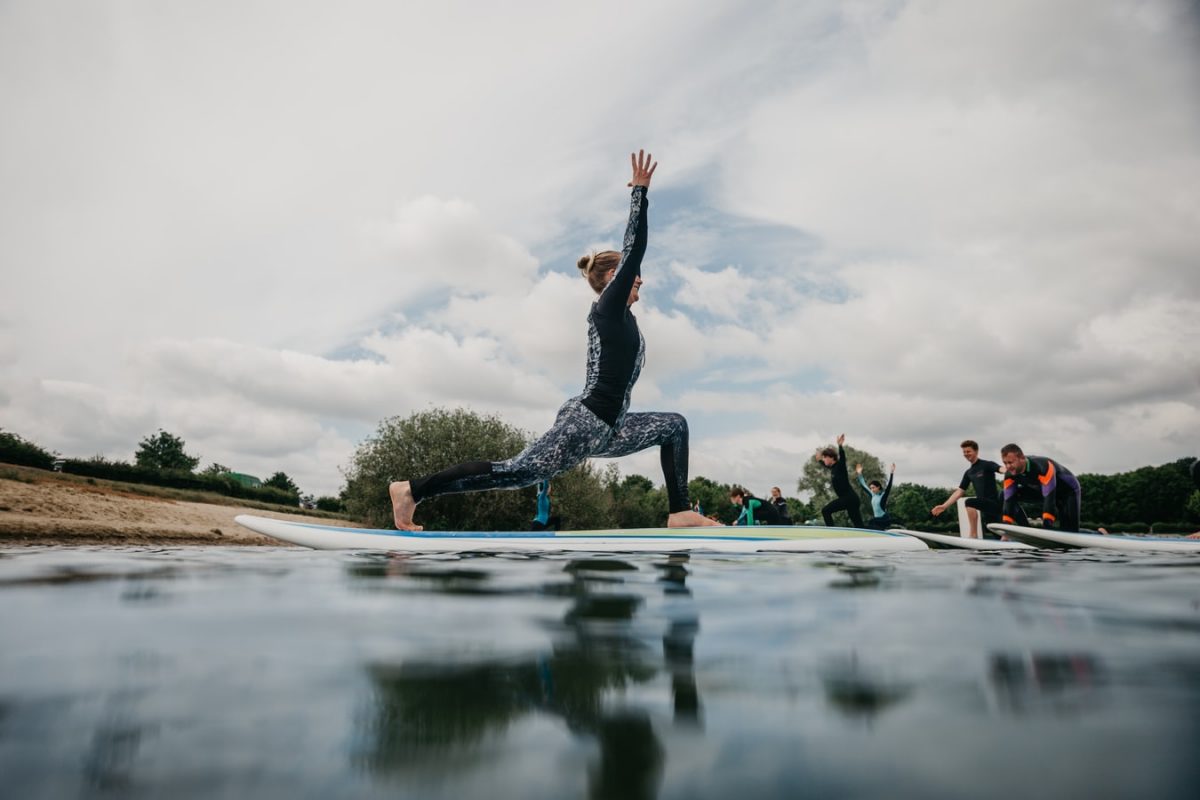
Yes, this is exactly what it sounds like. SUP yoga is a mixture of paddle boarding in yoga. This provides many of the same benefits that paddle boarding does in terms of physical exercise, but it’s also great for your mental health as you’re surrounded by nature – something that is proven to be good for us.
Another way that this workout reduces stress is with yoga breathing techniques. Slowing down and controlling your breathing allows you to focus on the present moment and forget about the stresses of daily life. Not only that, but this breathing technique also can benefit your cardiovascular system. It works alongside your heart pumping oxygen to your muscles and reduces the risk of high blood pressure and strokes in later life.
Surfing
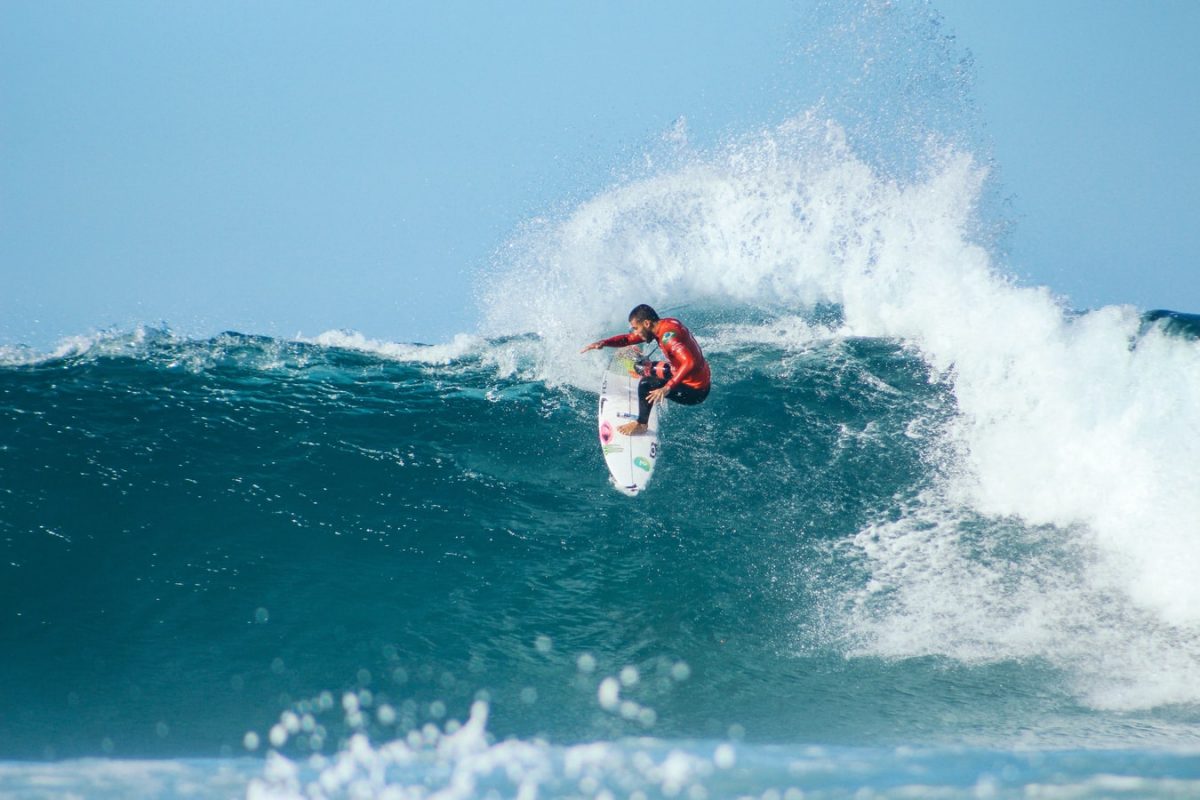
Board sports are a great way to get some exercise at the beach. Surfing is a little more full-on than stand up paddleboarding, and beginners will really be thrown in at the deep end. Before you can work on your core (which you get when you’re out on the board itself) you’ll have to paddle out to get ready to catch your wave. Even in smaller and gentler waves, paddling out will still build your upper body strength.
Though surfing can be quite intense, it’s actually a low resistance sport, which is great news if you want to build strength in your joints. As well as building muscle and core strength, surfing is a sure-fire way to shed some pounds – with an average surfing session burning more than 700 calories an hour.
Kayaking
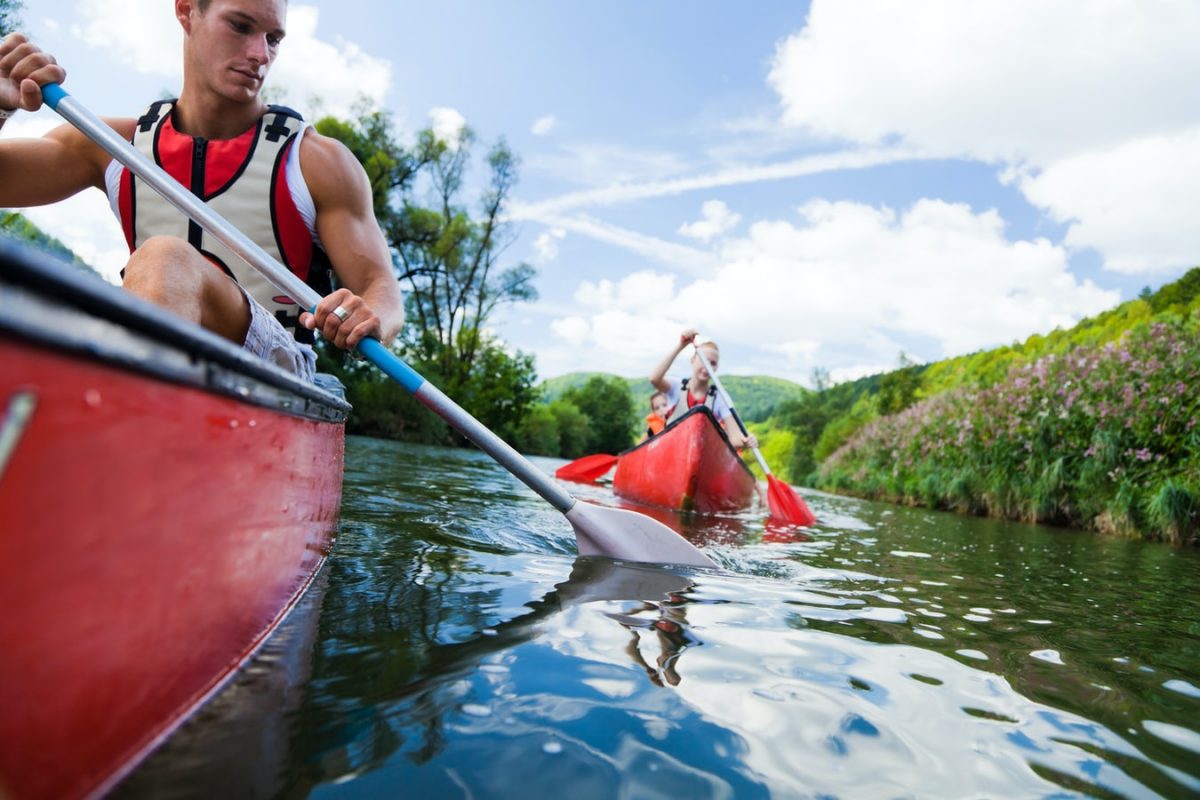
Kayaking has similar benefits to stand up paddle boarding when it comes to cardiovascular fitness and muscle strength, but it also builds up your aerobic fitness. Muscle strength here comes mostly from moving the paddle, but it’s not just your arms that you need to do that. Your arms, shoulders, and chest all have a part to play.
Don’t think that your legs will be getting an easy ride though – the strength to power your kayak comes from the pressure that your legs apply – that and rotating your torso. If you’re somewhere like Croatia, challenge yourself by kayaking from beach to beach or even out to an island once you have a bit of experience under your belt.
Swimming

If there’s one problem with all the sports we’ve looked at so far, it’s the need for equipment. Boards, kayaks, and paddles can be expensive to get a hold of. And even then, they can be tricky to transport. Whereas with swimming, all you need is a swimsuit and perhaps some goggles.
Like many water-based activities, swimming is low impact – so it’s gentle on muscles, joints and ligaments. It’s an excellent way to recover from a long term injury. And if you haven’t been injured? It’s good cardio and you’ll feel refreshed in the cool water – especially if it’s a hot and sunny day!
Go for a Walk or a Run
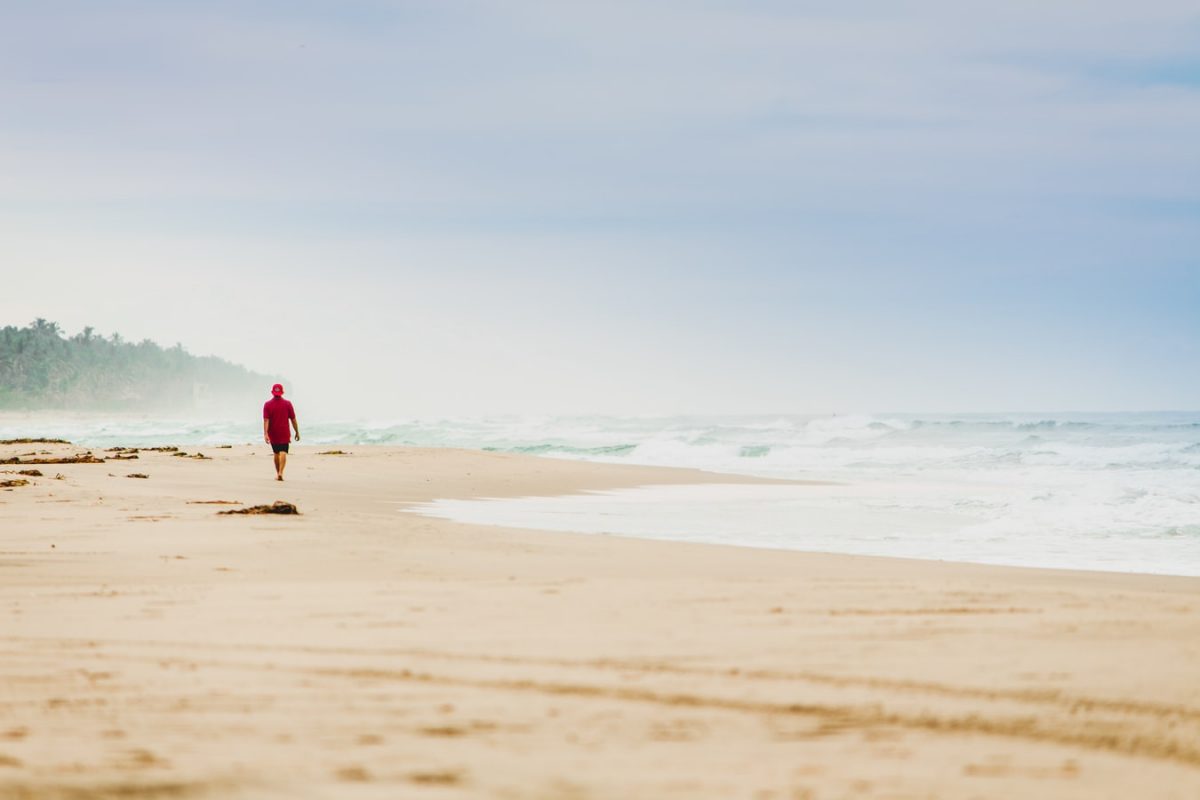
Like swimming, walking or running doesn’t require any equipment (except perhaps a decent pair of sneakers), but it is a great workout. And you don’t even have to get wet! Walking or running on sand will feel a little more difficult, and it is actually more strenuous than doing the same thing in your local park. That’s because when making your way across soft and dry sand especially, your muscles, tendons, and ligaments are working harder than they would be on stable ground. So, after running on sand you may notice a more pronounced ache in your muscles. That’s nothing to worry about though!
Play Sports
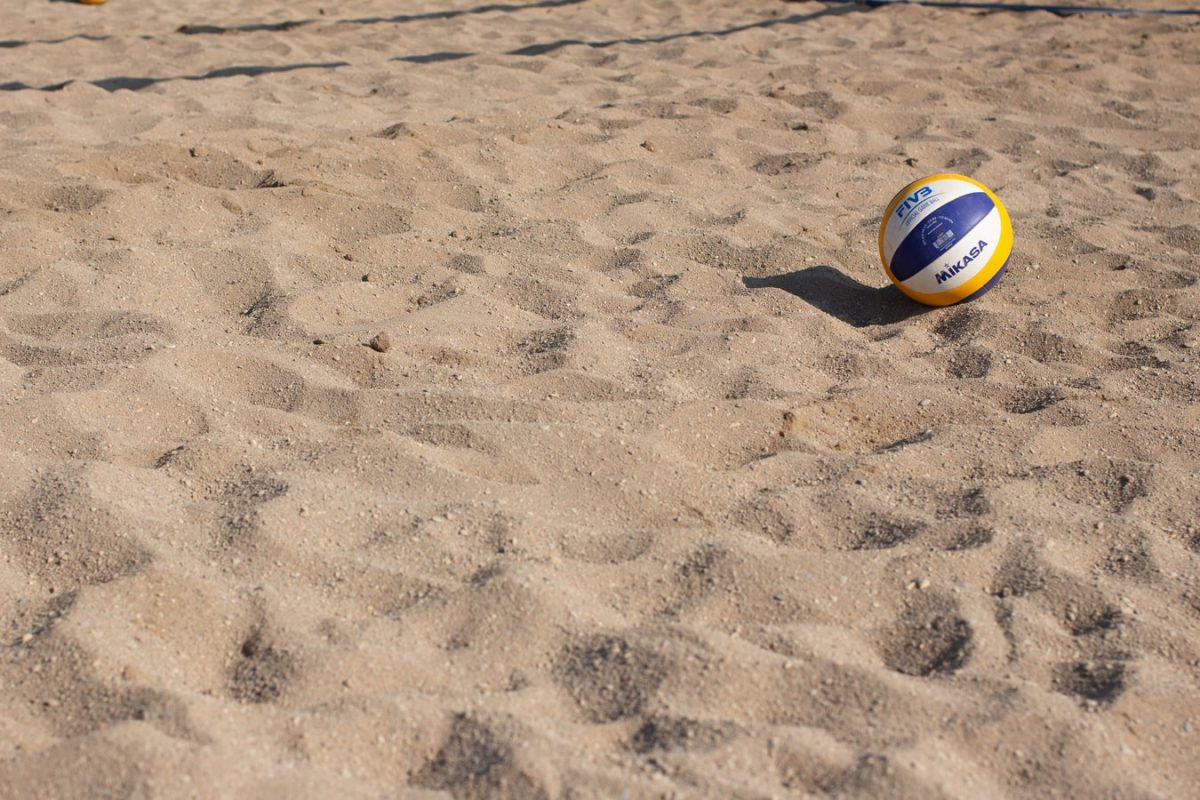
All of the sports we’ve listed above are solo pursuits – though you can do many of them as part of a club or group. But for the competitive among us, there’s nothing quite like playing sports. The beach is the ideal place to set up a game of rounders, volleyball, or soccer. Just remember to bring a ball and any other equipment you may need. Jumpers and bags make great goalposts!
















